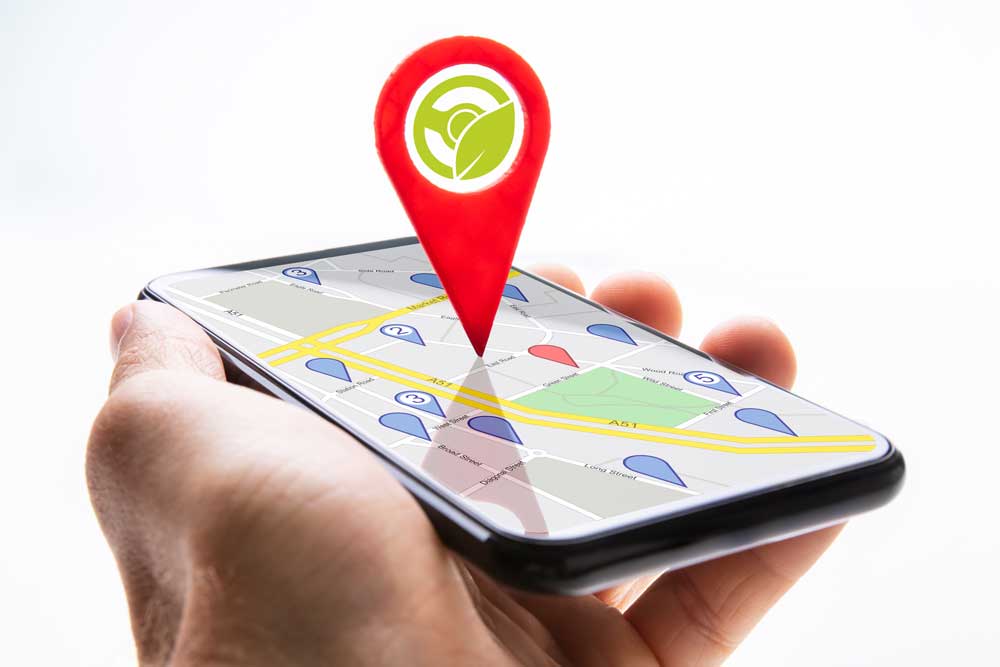The Sustainability Perks of Smart Parking
Parking is not something we typically associate with sustainability. That’s not surprising, considering that the transportation sector makes up 14% of global greenhouse gas emissions. But small changes in how people park can have a huge impact on overall emissions. In fact, 30% of traffic in cities is attributed to drivers searching for parking. Getting drivers into parking spaces more efficiently can reduce those overall emissions and help mitigate the environmental impact of cars.
Smart parking technology makes parking easier for consumers and simplifies management for owners and operators. But it can also play a role in making parking garages, and the mobility ecosystem, more sustainable. From digital tools that reduce waste, to smart ways of tackling the last mile, to becoming hubs for EV charging, parking garages have a myriad of new opportunities to be part of the sustainability revolution.
Helping drivers navigate to an available garage is one of the main ways smart parking technologies can promote sustainable practices in our communities.
eParking reservation apps let drivers reserve and pre-pay for parking. Some interface with popular maps apps, offer recommendations for specific garages based on price and distance sensitivity, and even let drivers enter the garage via Bluetooth.
Digital signage is another great way to get drivers into spaces more efficiently. Real time displays of space availability and rate transparency can attract drivers that may be looking for a place to park. Within garages, sensor systems used in conjunction with digital signage can be implemented to help guide drivers to open spaces.
Digital Payments
Even if drivers don’t reserve and pre-pay, digital payments can still help to get them on their way faster. QR codes can be placed on tickets or on signs around a garage to direct parkers to an online payment portal. If drivers pay on their phone before they exit a garage, they spend less time hovering at the exit.
Especially for large-scale operations and event venues, eliminating even seconds at the exit can have big benefits in terms of reducing lines, wait times, and idling. Reducing that time spent in line at the exit both improves user experience and reduces emissions. A double win!
Last Mile Transit
Introducing popular last-mile technologies like eScooters is a new way parking asset owners are capitalizing on the sustainability movement. More and more consumers are choosing the small electric mobility devices for short trips over alternatives like driving or rideshare. Today, up to half of all scooter trips replace those that would be taken by car. Of all trips taken by car in the U.S., at least 40% are under three miles, a distance well within the range for eScooter rides.
With eScooter rentals inside parking assets, drivers can choose garages further away from their destination, save money, and reduce the emissions of their overall trip.
EV Charging
With 35 million EVs anticipated to be on roads by 2030, there is an unprecedented level of demand for charging that parking assets can help to meet. The National Renewable Energy Laboratory estimates that for every 1,000 EVs, we will need 40 Level 2 charging stations. That adds up to somewhere around 1.2 million level 2 ports. To meet that estimated demand, we would need to install 380 EV charging ports each day for the next nine years, according to Forbes.
The recent 1.2 trillion infrastructure bill sets aside $7.5 billion to build 500,000+ charging stations across the country, with a focus on Level 2 chargers. With standard charging (as opposed to DC fast), the expectation is that drivers will plug in more often, for shorter periods of time. For parking assets, this opportunity is ideal: Level 2 chargers are much more affordable to install, run, and maintain and will be utilized by more parkers, with greater frequency.
The parking industry has an opportunity to be an asset in the EV revolution and contribute to a more sustainable future of mobility. It starts with closing the gap between charging supply and demand from EVs.
How to Start Making Your Operation More Sustainable Today
The first step in making garages more sustainable is to evaluate whether your technology partner can support and integrate with add-ons like digital signage or mobile payments. Then, look at your customer base and decide which implementations will be most impactful to them. If you have an abundance of repeat customers or monthly parkers, digital signage is probably not as important as mobile payments or even ameni charging. Those added amenities make repeat customers loyal customers.
Finally, look at what’s next in sustainability trends. With the EV revolution right around the corner, ramping up electric capabilities is key. In garages that are not yet electrified or haven’t been evaluated for EV charging, running ample power may be a lengthy process. It’s best to get started with the process now and be prepared when EV charging is something most drivers are looking for.
Technology is the key to all of this: having the right tools in your hands to see consumer insights, add-on the right sustainable capabilities, and track the success of new implementations.
stock.adobe.com / Andrey Popov / x.designer




